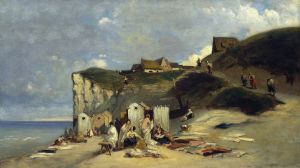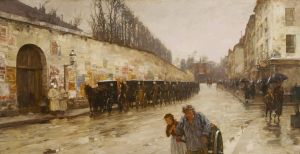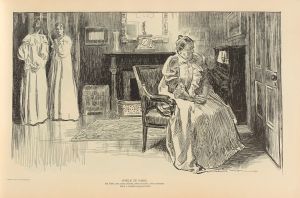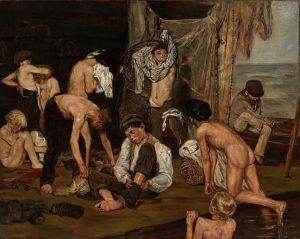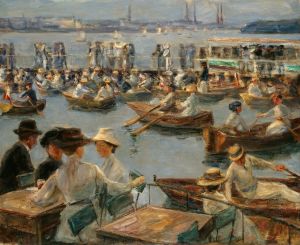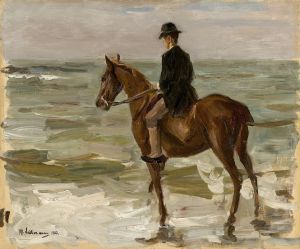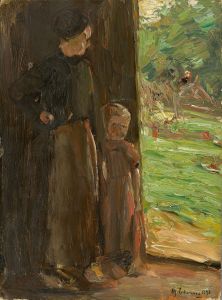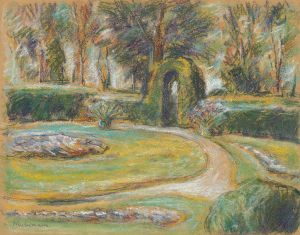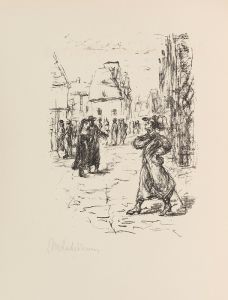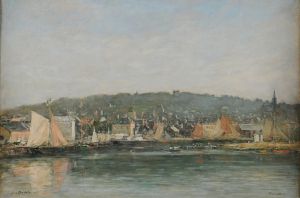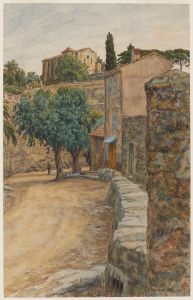
Straße in Zandvoort
A hand-painted replica of Max Liebermann’s masterpiece Straße in Zandvoort, meticulously crafted by professional artists to capture the true essence of the original. Each piece is created with museum-quality canvas and rare mineral pigments, carefully painted by experienced artists with delicate brushstrokes and rich, layered colors to perfectly recreate the texture of the original artwork. Unlike machine-printed reproductions, this hand-painted version brings the painting to life, infused with the artist’s emotions and skill in every stroke. Whether for personal collection or home decoration, it instantly elevates the artistic atmosphere of any space.
Max Liebermann's painting Straße in Zandvoort (translated as Street in Zandvoort) is a work by the renowned German painter and printmaker Max Liebermann (1847–1935), a leading figure of the German Impressionist movement. The painting depicts a street scene in the Dutch coastal village of Zandvoort, a location Liebermann visited frequently during his career. Zandvoort, situated near the North Sea, was a popular destination for artists in the 19th century due to its picturesque landscapes and vibrant light, which provided ample inspiration for plein air painting.
Liebermann was deeply influenced by the Dutch Masters and the naturalistic style of painting he encountered in the Netherlands. His visits to Zandvoort, beginning in the 1870s, marked a significant period in his artistic development. During this time, he focused on capturing scenes of everyday life, often portraying rural workers, fishermen, and local villagers in their natural environments. Straße in Zandvoort is characteristic of this phase in Liebermann's career, showcasing his interest in realism and his ability to depict the interplay of light and shadow.
The painting features a quiet street lined with modest houses, with figures engaged in daily activities. Liebermann's brushwork is loose yet precise, emphasizing the textures of the buildings and the natural surroundings. The muted color palette reflects the subdued tones of the Dutch coastal environment, while the composition draws the viewer's eye along the street, creating a sense of depth and perspective.
Liebermann's works from Zandvoort, including Straße in Zandvoort, are notable for their focus on ordinary life and their departure from the more romanticized or idealized depictions of rural life that were common in 19th-century art. Instead, Liebermann sought to portray his subjects with honesty and dignity, emphasizing the simplicity and authenticity of their lives.
The exact date of creation for Straße in Zandvoort is not definitively documented, but it is generally associated with Liebermann's early visits to the Netherlands in the late 19th century. The painting is part of a broader body of work that reflects his admiration for Dutch culture and his commitment to capturing the essence of everyday life.
Today, Max Liebermann is celebrated as one of Germany's most important Impressionist painters, and his works, including Straße in Zandvoort, are held in high regard for their artistic and historical significance. Many of his paintings are housed in major museums and private collections, though the specific location of Straße in Zandvoort may vary depending on exhibition or ownership.





